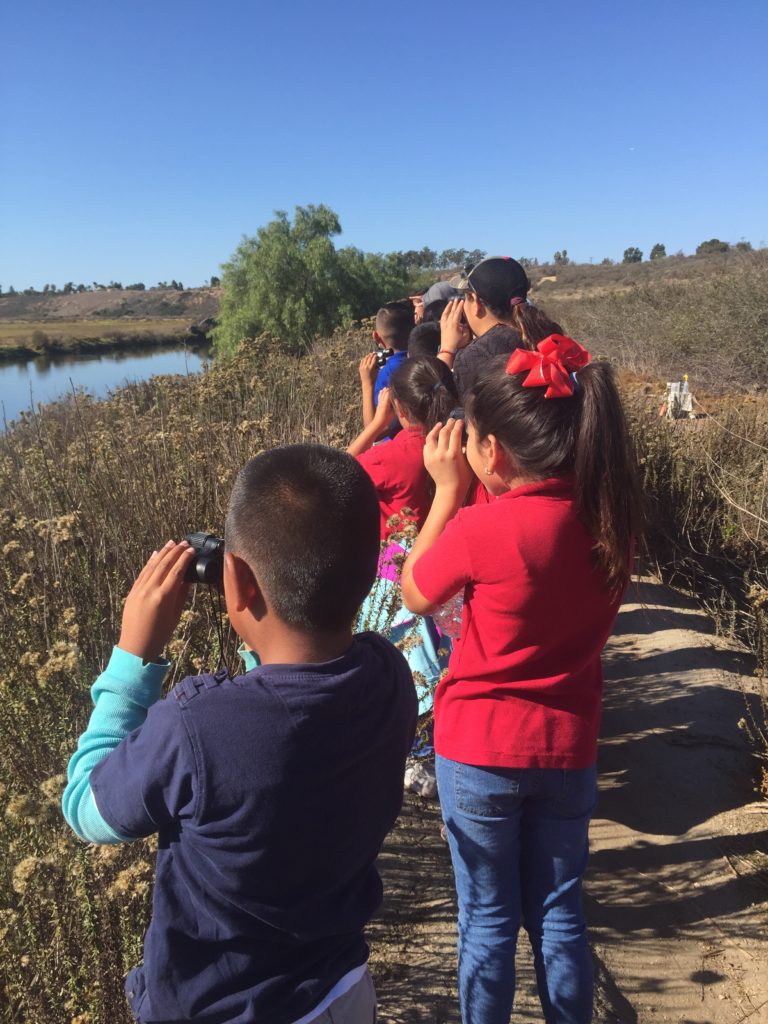Outside the urban glare of Los Angeles, we found a night sky packed with stars and a still silence interrupted only by the wind’s whisper and the chatter of crickets and frogs. It was different, yet familiar.
My father packed little more than a kerosene lamp, a small tent and some fishing gear for those family camping trips of my youth. But it was never about what we brought or left behind. It was about immersing ourselves in the natural wonders of Southern California’s mountains, forests and beaches — and discovering that we were connected to something bigger.

Whether we were on a KOA Campground or Refugio Beach, every direction offered frontiers to explore, mysteries to be solved and scientific observations to be made, without textbooks, lab coats or microscopes. Allowed to chase our curiosities, my brothers and sisters and I were laying deep foundations for learning. But if you asked us, we were just having fun.
Today, technology has emerged as a primary frontier of childhood exploration. But while there are obvious benefits to raising tech-savvy children, I echo the sentiments of countless researchers who suggest we’re missing out on opportunities to nurture brain development and strengthen mental health when we close ourselves off from nature.
Author Richard Louv, who has written extensively on this subject, points to an emerging body of evidence connecting nature to greater physical and emotional health. By contrast, disengagement from the natural environment results in what Louv terms “nature-deficit disorder,” which, he says, correlates with attention difficulties, greater rates of physical and emotional illness, and reduced use of our senses.
Louv isn’t alone. A number of writers, psychologists and academics have produced volumes quantifying the benefits of direct exposure to nature. At the same time, studies continue to show we’re spending less time outdoors and more time with electronic screens, which do little to stoke happiness or well-being.
Access is part of our challenge. Census data shows that more than 80 percent of Americans live in urban areas, some of which lack parks or open space. And while more children are participating in organized sports, fewer kids are experiencing the outdoors through unstructured play, according to Louv, who blames a perceived lack of time, as well as concerns about safety.

In 2004, Rhonda L. Clements, professor of education at Manhattanville College in New York State, conducted a survey of 830 mothers nationwide. While 71 percent of them reported playing outdoors as children, only 26 percent said their kids did the same on a daily basis. Interestingly enough, the results showed little differences between rural and urban settings.
With supercharged academic standards and a greater focus on the STEM subjects of science, technology, engineering and math, some educators may choose to ignore these trends. But we do so at a tremendous cost given such extensive evidence that nature — in addition to being intertwined with a number of scientific fields — not only sharpens minds but amplifies learning in other subjects.
Indeed, a recent study of children ages 9 and 10 revealed that hands-on lessons in nature produce students who are more engaged in their other academic studies. Moreover, a duo from UC Berkeley points to more than 100 studies that demonstrate how exposure to nature can have positive impacts on thought processes, as well as our physical and mental health.
This is why environmental education programs like OCDE’s Inside the Outdoors are so vital.
Since 1974, Inside the Outdoors has been nurturing student knowledge and stewardship of the natural environment with highly qualified staff and more than a dozen field trip locations throughout Orange County and Los Angeles counties. Lessons are aligned with the state’s instructional standards, and for classes that can’t venture out, the program dispatches Traveling Scientists to schools, often accompanied by wildlife.
Inside the Outdoors logs more than 150,000 hours of environmental STEM learning each year and has served some 3.5 million students to date. Suffice to say, many of these students might not otherwise have these experiences.
Teaching students about nature and immersing them in the natural environment is both transformative and enduring, producing benefits to our bodies and minds that we are only beginning to understand. Even as we prepare young women and men for an increasingly digitized world, we must continue to create opportunities to recharge their minds and spirits in the great outdoors.
As a child, my family didn’t take lavish vacations. But I am fortunate that we could occasionally escape the urbanized confines of Los Angeles to experience a larger world that asked as many questions as it answered, and today these trips are among my most cherished childhood memories.
Years later, I see how they prepared me for life as an educator, as well as for trips with my own sons, who similarly had moments to gaze up at the countless stars and wonder.
A version of this column was originally published in 2018 by Ten Strands, which aligns stakeholders and strategies with the goal of raising environmental literacy by providing high-quality, environment-based learning and hands-on education to California K–12 students.
